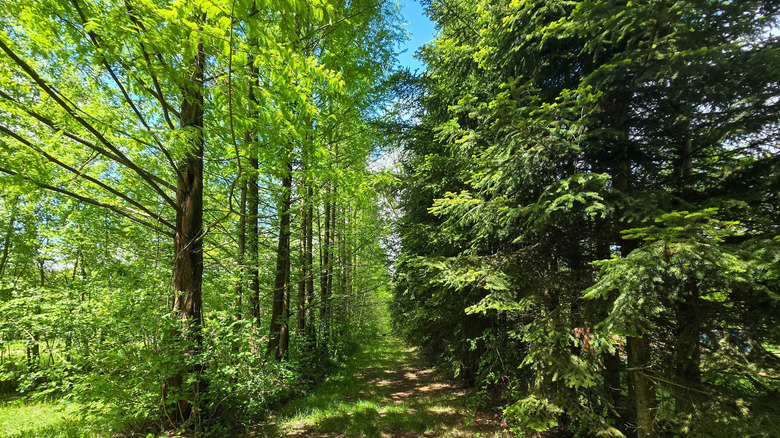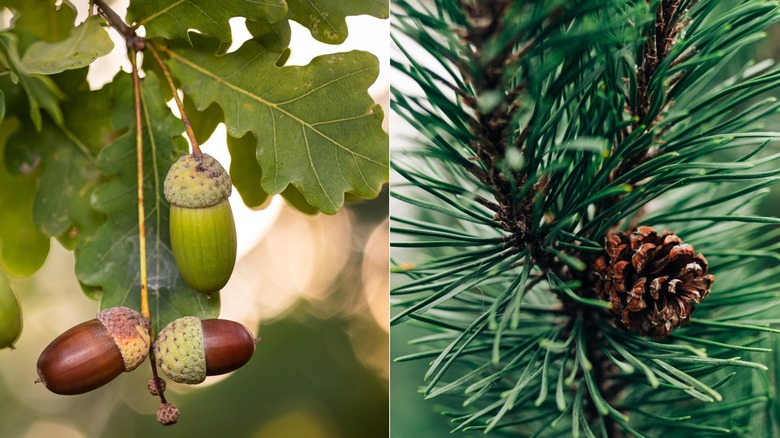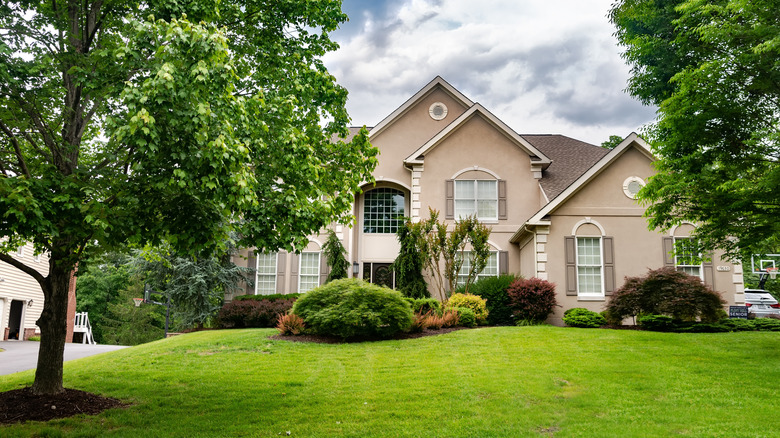The Difference Between Deciduous And Coniferous Trees Explained
In elementary school, most of us learned the basic differences between deciduous and coniferous trees. Deciduous trees have leaves that change color and drop in the fall, and coniferous trees have needles that stay green year-round. While this is a general rule of thumb, there are a few notable exceptions, including the deciduous conifers such as the dawn redwood or the larch. But, in general this basic distinction can help guide your landscaping decisions in a big way.
Deciduous trees like maples, oaks, dogwoods, or willows provide shade in the summer and let in sunlight during the winter, which makes them a great choice for energy-conscious homeowners. However, you'll want to avoid planting certain popular deciduous trees — like poplar (Populus spp.), aspen (Populus tremuloides), willow (Salix spp.), and silver maple (Acer saccharinum) — too close to your house, because their aggressive root systems and fast growth can cause problems for foundations, sidewalks, and plumbing.
Coniferous trees like pine, spruce, and cedar, hold on to their needles year-round, giving your yard constant greenery and structure. They are ideal for adding privacy and natural wind breaks, and they require relatively little maintenance. Just keep in mind that caring for pine trees during the winter months is important — mulching and watering before the ground freezes will go a long way toward keeping these conifers healthy.
A closer look at deciduous and coniferous tree differences
Back in elementary school, we learned the most obvious differences between these two types of trees — deciduous trees have leaves and coniferous trees have needles. But there are a few other distinctions your teacher may not have gone too deeply into. Climate is a huge factor: Deciduous trees thrive in temperate areas with distinct seasons, while conifers are built for harsher, dryer, colder climates, often at higher elevations.
Another major difference lies in reproduction methods. Deciduous trees reproduce by flowering and spreading via fruit or nuts. Meanwhile, conifers reproduce through cones — male pinecones produce pollen and female pinecones produce seeds. Both show the effectiveness of adaptation for each type of tree in its specific environment.
Lastly, most conifers produce softer wood (like pine or fir), which is lighter and easier to work with. Deciduous trees tend to produce hard woods (like maple or oak), which is prized for furniture or flooring. Each is valuable for a variety of needs.
Choosing the right tree type for your landscape needs
Ultimately, the choice between coniferous and deciduous trees depends on your specific landscape requirements and the look you're trying to achieve. If you need shade in summer but sunlight in winter, opt for deciduous trees. If privacy, structure, or year-round greenery is your goal, coniferous trees are the better choice. Their upright, tidy forms are perfect for framing entryways or creating defined spaces as well. In fact, coniferous trees like the Norway spruce and the green giant arborvitae are among the most beautiful and easy to grow trees trending for front yards this year. Because of their clean shapes and lack of leaf drop, these trees are ideal for smaller, more curated spaces.
For many, the smartest move is to blend both tree types for a more well-rounded landscape and added curb appeal. Use conifers for structure and privacy, and deciduous trees for shade and color. Just be sure to consider your local climate, sun exposure, and the size of your space. No matter which types you choose, selecting the right trees can turn your landscape into the dreamy, yet functional space you always imagined.


